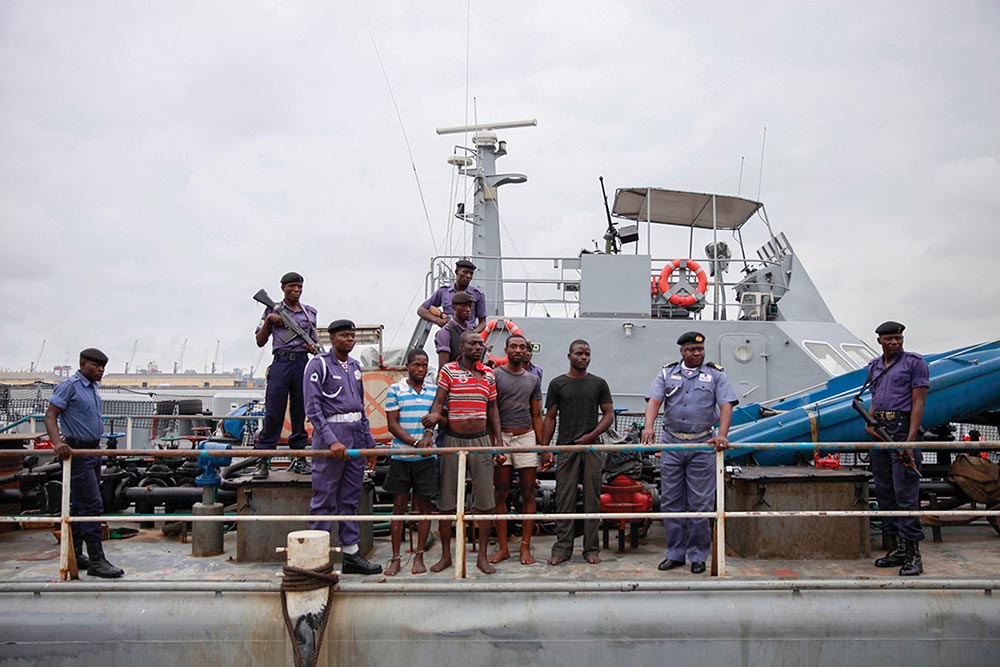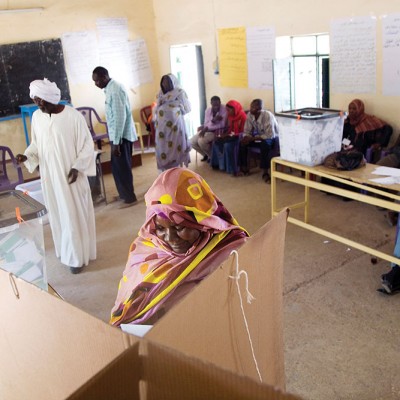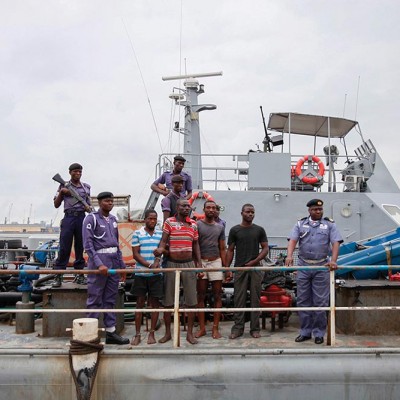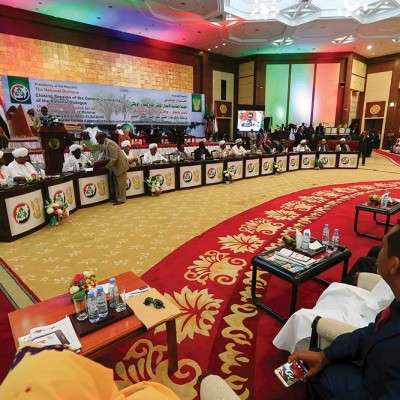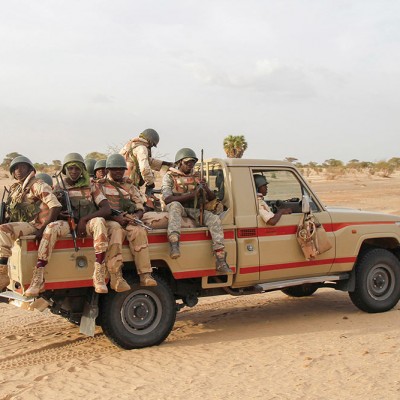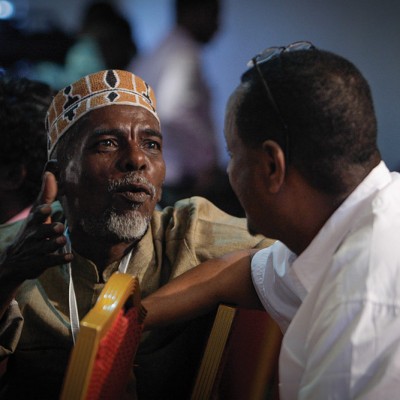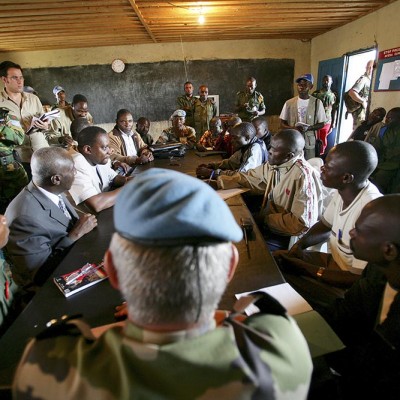Introduction
Africa is rich in natural resources, both inland and at sea. There has been a scramble for more or extended sea territories, such as the extension of Exclusive Economic Zones (EEZs), and continental shelves. In addition, recent discoveries of hydrocarbon deposits have generated high interest in the African Maritime Domain (AMD). However, the AMD has been plagued by crimes such as illegal, unreported and unregulated (IUU) fishing; smuggling; armed robbery; piracy; and human, narcotics and small arms trafficking. Due to this, maritime insecurity remains the greatest impediment to Africa’s development of a Blue Economy.1
There is unanimous agreement that decisive action must be taken to reverse the negative trend of pervasive insecurity in the AMD. The African Charter on Maritime Security, Safety and Development in Africa, also known as the Lomé Charter, was signed on 15 October 2016 by heads of state and governments of African Union (AU) member states. The charter is a follow-up to the AU’s 2050 Africa’s Integrated Maritime Strategy (2050 AIM Strategy), which forms a blueprint for the advancement of African seapower.2
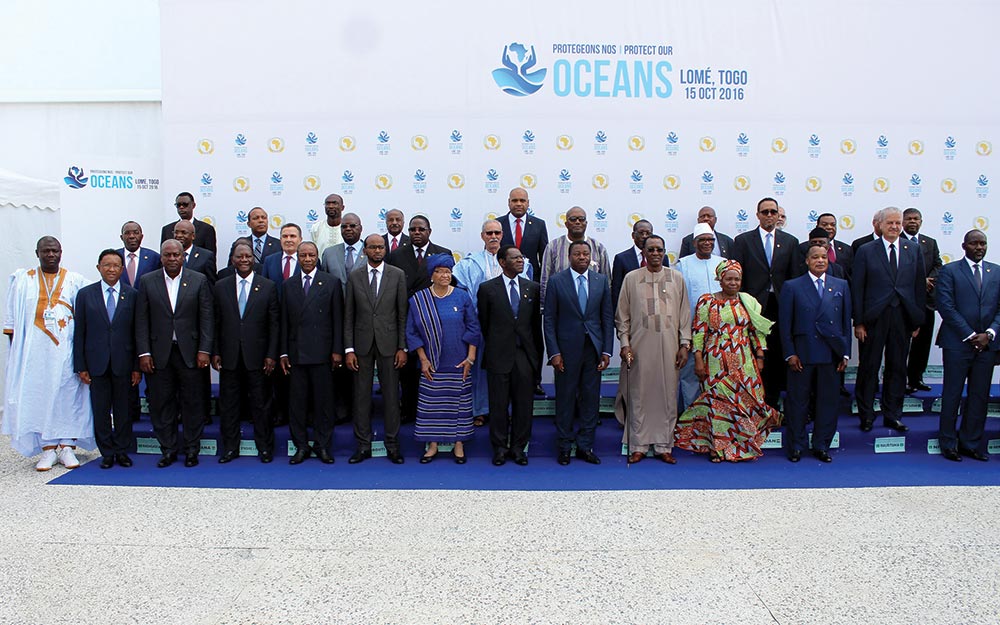
This article identifies the inherent state capacity challenges that might hinder the implementation of the Lomé Charter, and advocates that cooperation is a means of enhancing state capacity in this regard. To achieve this, the article discusses the status and key features of the Lomé Charter, before briefly weighing state responsibilities against state capacity. It further considers some maritime security cooperation models and recommends leveraging cooperative mechanisms to address identified capacity gaps.
Status of the Lomé Charter
The Lomé Charter has the status of an international treaty as encapsulated in the Vienna Convention on the Law of Treaties. The charter was signed at the highest level by African heads of state and government, under the auspices of the AU.
Article 26 of the Vienna Convention, embodying the principle of “pacta sunt servanda” (“agreements must be kept”), states that “every treaty in force is binding upon the parties to it and must be performed by them in good faith”.3 As such, states are thereby bound, under international law, to abide by charter obligations. In addition, Article 18 of the Vienna Convention mandates states to refrain from acts that would defeat the object and purpose of a treaty.
A key point that should be noted pertaining to the internal law of states and the observance of treaties is: “A party may not invoke the provisions of its internal law as justification for its failure to perform a treaty. This rule is without prejudice to Article 46.”4
Article 46(1) goes further to prevent a state from “invoking the fact that its consent to be bound by a treaty has been expressed in violation of a provision of its internal law regarding competence to conclude treaties as invalidating its consent unless that violation was manifest and concerned a rule of its internal law of fundamental importance”.
The only provision for impossibility of performance of treaty obligations, given in the Vienna Convention, states: “A party may invoke the impossibility of performing a treaty as a ground for terminating or withdrawing from it if the impossibility results from the permanent disappearance or destruction of an object indispensable for the execution of the treaty. If the impossibility is temporary, it may be invoked only as a ground for suspending the operation of the treaty.”5
In summary, the implication of the status of the Lomé Charter is that since states willingly consented to be bound by it, each state party remains bound to meet the charter’s obligations. Furthermore, internal laws cannot be claimed as a reason for non-performance of such obligations.
Key Features of the Lomé Charter
The Lomé Charter, which is organised into seven chapters and 56 articles, covers:6
- the prevention and control of all transnational crimes at sea, including terrorism, piracy, armed robbery against ships, drug trafficking, smuggling of migrants, trafficking in persons and all other kinds of trafficking, IUU fishing, prevention of pollution at sea and other unlawful acts at sea, under the jurisdiction of a state party in its area of responsibility;
- all measures to prevent or minimise accidents at sea caused by ships or crew or aimed at facilitating safe navigation; and
- all measures for the sustainable exploitation of marine resources and optimisation of the development opportunities of sectors related to the sea (Article 4).
This broad coverage is further explained in separate articles of the charter. Some salient features are discussed in the following paragraphs.
Article 5 espouses socio-economic measures, such as poverty reduction and job creation within the maritime sector, as avenues for preventing crimes at sea. Express mention is made of the promotion of artisanal fishing and enhancement of the processing and marketing of fishery products at national, regional and international levels.
Article 6 highlights state party responsibility, while Articles 7 and 8 govern the establishment of national coordinating structures and the harmonising of domestic legislation respectively. These impose national responsibility on the executive and legislative branches of governments.

States are mandated by Article 9 to guarantee resources for investments in maritime security and safety. In addition, cooperation between flag and coastal states7 is encouraged with respect to the sharing and support of financial obligations (Article 10). Article 11 mandates states to establish a Maritime Security and Safety Fund. These articles acknowledge the likelihood of resource limitations and seek to address them. Hence, the Maritime Security and Safety Fund is an important feature of the charter, as it would evidently provide backing for several of the initiatives advocated by the charter.
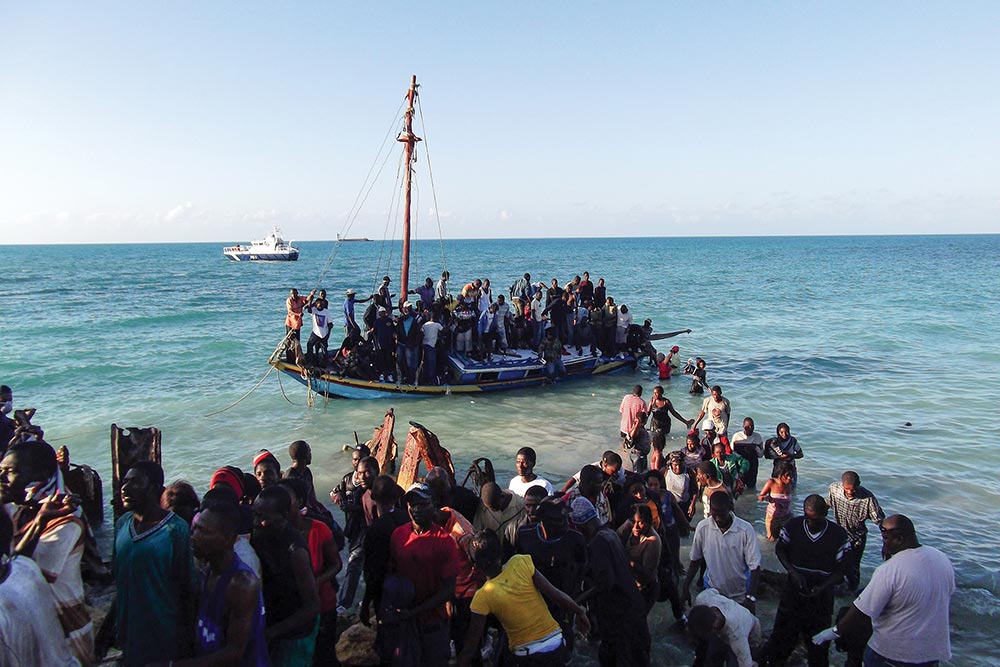
Maritime governance features critically in the Lomé Charter. State parties are encouraged to ensure good maritime governance (Article 14) and to delimit their maritime boundaries (Article 15). Furthermore, states are mandated in Articles 16 and 17 to ensure measures to guard against trafficking in human beings and narcotics. In addition, state responsibility for the safety of navigation is highlighted in Article 18. It is pertinent to note the ongoing efforts towards maritime governance improvement across most African states. Nevertheless, more work needs to be done to achieve higher standards of maritime governance, including maritime boundary delimitation, countering human and drug trafficking, and the safety of navigation.
Chapter 4 of the charter is dedicated to the development of a Blue Economy for Africa. This covers exploitation of the AMD, fisheries and aquaculture, wealth and job creation, an integrated human resource strategy and competitiveness improvement. Other aspects include infrastructure development, climate change and environmental protection, protection of marine biology including against toxic waste dumping, the prevention of the illegal exploitation of natural resources, and maritime disaster risk reduction. This chapter reinforces several provisions of the 2050 AIM Strategy. The coherence between the Lomé Charter and the 2050 AIM Strategy indicates strategic commitment on the part of governments to combating the numerous threats militating against Africa’s Blue Economy.
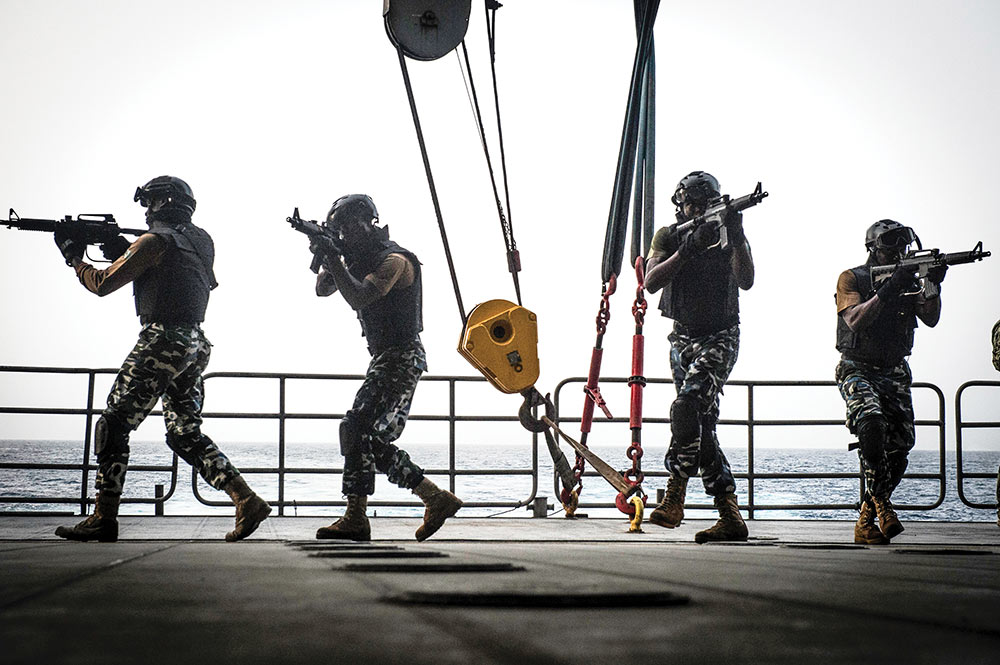
The final chapter of the charter (Chapter 5) comprises of 11 articles dedicated to cooperation. Specifically, cooperation is encouraged in exploitation, fishing and aquaculture, combating crimes at sea, and science and academia (Articles 19–29 and 36). Furthermore, Articles 37, 38 and 39 provide for continental, regional and national structures and frameworks respectively, which would facilitate cooperation. Another critical provision in Articles 33 and 34 is for maritime information and intelligence sharing. These articles are meant to facilitate the exchanges of maritime security information across national, regional and continental structures.
The provisions of the Lomé Charter demonstrate reasonable commitment towards overcoming the obstacles militating against security, safety, awareness and sustainability in the AMD. This commitment can only be translated to action through the demonstration of political will by African states.
Responsibility versus Capacity
The Lomé Charter expressly states the responsibilities of state parties:
Each State Party undertakes, according to its own realities, where applicable, to:
- organise its actions at sea and to develop its capacity to protect its maritime area and provide assistance to other States Parties or third States as may be required;
- strengthen law enforcement at sea, through the training and the professionalisation of navies, coast guards, and agencies responsible for maritime safety and security, custom authorities and port authorities;
- maintain surveillance and reconnaissance patrols, in the anchorage areas, the exclusive economic zone and continental shelf for law enforcement, and search and rescue operations.8
State responsibilities in the Lomé Charter, which reinforce provisions of the 2050 AIM Strategy, call for a high level of political will. Beyond that, the necessity for state capacity to rise up to the occasion is a significant requirement. Having consented to be bound by charter obligations, each state must discharge the requisite capacity to enforce the charter’s provisions. Nonetheless, there is nothing to suggest that states are not at liberty to subsume existing government projects, policies and programmes under the umbrella of performance of their charter obligations. For example, ongoing projects concerning maritime governance, navigational safety and maritime boundary delimitation could be a starting point.
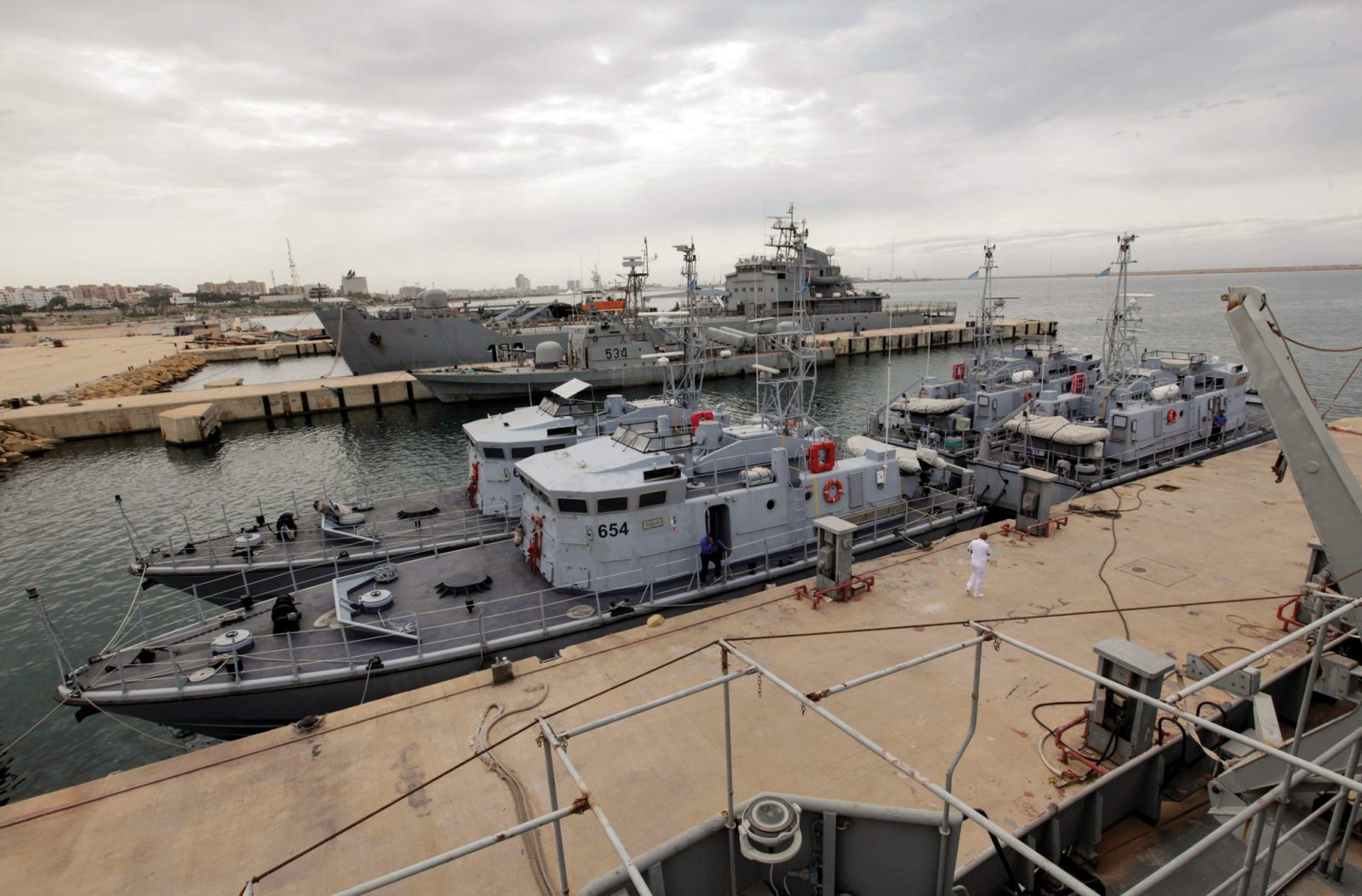
Capacity Challenges
Several continental and subregional initiatives in Africa have either been stalled or have witnessed slow implementation for various reasons. For example, the African Maritime Transport Charter, signed in 2010 in South Africa, is yet to come to fruition. A realistic view is that implementation of the Lomé Charter within and among African states will not be easy. Lomé Charter obligations translate to national requirements in terms of equipment, logistics, technology, training and doctrine. According to the United Kingdom think tank, Wilton Park, “weaknesses in maritime security capacity are resulting in a multitude of destabilising effects and loss of significant revenue on the part of many developing countries”.9
It is important to note that while some capacity challenges currently exist in Africa, others will emerge with time. Notwithstanding, this article highlights a few identified challenges, such as bureaucracy, a low level of maritime awareness, inadequate platforms and a low level of maritime domain awareness (MDA).
In some states, entrenched bureaucratic positions and lack of institutional capacity are existing obstacles to Lomé Charter obligations. Therefore, compliance with charter obligations might provide a basis for a review of legal and regulatory frameworks. Whether this is gradual or radical, substantial steps need to be taken with respect to bureaucratic structures and national legislations. These steps might lead to a comprehensive maritime security sector reform (MSSR). Coherence across government, in addition to the requisite political will, is essential to overcoming the challenge of bureaucracy.
A low level of maritime awareness is a common theme across Africa. The AU defines maritime awareness as “the effective understanding of anything associated with the maritime domain that could impact upon the security, safety, economy, or environment”.10 The lack of maritime awareness has also been referred to as “sea blindness”. The inability to appreciate the potential benefits within the AMD, due to centuries of territorial dominance of social and cultural life, has the potential to restrict the actualisation of Africa’s Blue Economy. It could be argued that this lies more in the philosophical domain rather than that of capacity. However, this article considers sea blindness as a capacity shortfall, which requires substantial capacity-building.
Most African coastal states have inadequate platforms to enforce a satisfactory regime of maritime security. In this case, “platforms” loosely refers to ships, boats, aircraft and drones. Analysis shows that fewer than one quarter of African coastal states – such as South Africa, Nigeria, Algeria and Egypt – have more than 10 operational platforms for maritime security.11 Fewer platforms translate to limited patrols and, by extension, higher likelihood of maritime crimes (such as piracy and IUU fishing) going undetected. Although maritime security threats are more pronounced in some parts of Africa than others, the need for an adequate number of platforms cannot be overemphasised. More platforms would ensure greater presence at sea, thereby providing reassurance for maritime economic activities.
Another common capacity shortfall is inadequate MDA among African states, such as Guinea, Liberia and Sierra Leone. Most African coastal states are unable to maintain surveillance effectively over their territorial waters and EEZs. With advances in technology, MDA has advanced from traditional sources such as radar to regional maritime awareness capability (RMAC), automatic identification systems (AIS) and long-range identification and tracking (LRIT). However, these are expensive technologies, which are beyond the reach of many African states that have greater priorities to contend with. There is therefore a need for innovative measures to enhance MDA.

Maritime Security Cooperation Models

One key question to ask in the face of the identified capacity challenges is: Is cooperation the answer? National and multinational cooperation is a critical feature of the Lomé Charter. In a bid to seek potential models for adoption by African states, some recent examples of cooperative mechanisms are worthy of consideration. These are at national, bilateral, regional and multilateral levels.
Within African nations, various ministries, departments and agencies would be required to collaborate on governmental responses to charter obligations. Individual member states need to rise above traditional biases and engender interagency cooperation to achieve the best governmental responses in the midst of scarce resources. The national coordinating structure provided for in Article 7 of the charter would be responsible for this. Article 39 goes further to provide for national legal frameworks. This might involve the adoption or amendment of legislation. It is encouraging that some African countries have established templates for interagency cooperation in the maritime security sector. One example of this was witnessed in Ghana, where the Fisheries Department of the Ministry of Agriculture was involved in financing the acquisition of patrol vessels for the Ghana Navy. Another example is in Nigeria, where the Nigerian Navy signed a memorandum of understanding (MOU) with the Nigerian Maritime Administration and Safety Agency (NIMASA).12
Between member states, the bilateral mechanism is a viable option. This is most feasible between contiguous nations. One example was Operation Prosperity in 2014 between Nigeria and the Republic of Benin. This operation involved the deployment of a Nigerian warship, NNS Nwamba, to Cotonou for combined patrols with the Beninois navy. This drastically reduced the menace of sea robbery along the Benin-Nigeria maritime frontier.13 Another variant of the bilateral model is the non-contiguous partnership, usually between an African state and an external partner. This is common in Francophone countries, such as Togo and the Republic of Benin, where France maintains a strong working relationship with these countries’ maritime forces.
Another model for cooperation is the subregional mechanism. This is based on the regional economic communities such as the Economic Community of West African States (ECOWAS), Economic Community of Central African States (ECCAS) and Southern African Development Community (SADC). Similarly, the Maritime Organisation of West and Central Africa (MOWCA) and the Gulf of Guinea Commission (GGC) are frameworks for further multinational consideration. The Code of Conduct for the Repression of Piracy, Armed Robbery against Ships and Illicit Maritime Activity in West and Central Africa, also known as the Yaoundé Code of 2013, is a product of ECOWAS/ECCAS cooperation.
One unique framework for maritime security cooperation is the multilateral model. This could feature collaboration between African nations and foreign partners. A prime example of this model is the Africa Partnership Station (APS), promoted by the United States Africa Command (US AFRICOM). This is a multipurpose initiative involving security cooperation, capacity-building and maritime power projection by naval forces of the USA and several African nations. The annual maritime exercise, Obangame Express, is a similar cooperative capacity-building initiative under the auspices of AFRICOM.14 A different version of the multilateral model exists in Somalia, where the European Union (EU) and the North Atlantic Treaty Organisation (NATO), among other actors, are involved in MSSR.
It is important to state that this article does not propose the exclusive adoption of the aforementioned maritime security cooperation models. Rather, in the event of capacity gaps, the models could provide options for the mitigation of identified shortcomings. Further, it is imperative for states to work towards improving capacity shortfalls in the long term, rather than permanently relying on cooperative structures.
Conclusion
Undoubtedly, the AU has done well on the policy and strategy front to produce the 2050 AIM Strategy and the Lomé Charter. Africa’s maximisation of the benefits of its latent Blue Economy is hugely dependent on the capacity of AU member states to effectively discharge their charter obligations.
The AU must acknowledge the challenges confronting several African nations, which may impede responses to obligations. Beyond AU states, assistance from external partners might be required to overcome some challenges, especially regarding capacity. Cooperative mechanisms at national, bilateral, regional and multilateral levels provide avenues to address some identified capacity gaps, while states work on building the requisite capacity to fulfil charter obligations. Therefore, the AU must consider and encourage these mechanisms aimed at achieving the strategic goal of actualising Africa’s Blue Economy.
Endnotes
- African Union (2016) African Charter on Maritime Security and Safety and Development in Africa. Addis Ababa, Article 1. The African Union defines the Blue/Ocean Economy as “sustainable economic development of oceans using such technics as regional development to integrate the use of seas and oceans, coasts, lakes, rivers, and underground water for economic purposes, including, but without being limited to fisheries, mining, energy, aquaculture and maritime transport, while protecting the sea to improve social wellbeing”.
- African Union (2012) 2050 Africa’s Integrated Maritime Strategy. Addis Ababa.
- United Nations (1969) Vienna Convention on the Law of Treaties. Vienna.
- United Nations (1969) op. cit., Article 27.
- Ibid., Article 61(1).
- African Union (2016) op. cit.
- The term “flag state” refers to the sovereign state in which a sea-going vessel is registered, while the term “coastal state” generally refers to a sovereign state that exercises maritime jurisdiction and territorial rights over an adjoining expanse of sea.
- African Union (2016) op. cit., Article 6.
- Wilton Park (2009) Maritime Security: Strengthening International and Inter-agency Cooperation. Conference report. London, p. 1.
- African Union (2016) op. cit., p. 7.
- Author’s analysis of Jane’s Fighting Ships. See: Saunders, Stephen Commodore (2016/2017), Jane’s Fighting Ships. London: IHS.
- Akpolobikemi, Patrick (2015) Enhancing Nigerian Navy Operations through Effective Inter-agency Cooperation. The Sailor, 42, pp. 35–37.
- Ibid.
- US AFRICOM (2017) ‘Africa Partnership Station’, Available at: <http://www.africom.mil> [Accessed 15 January 2017].

